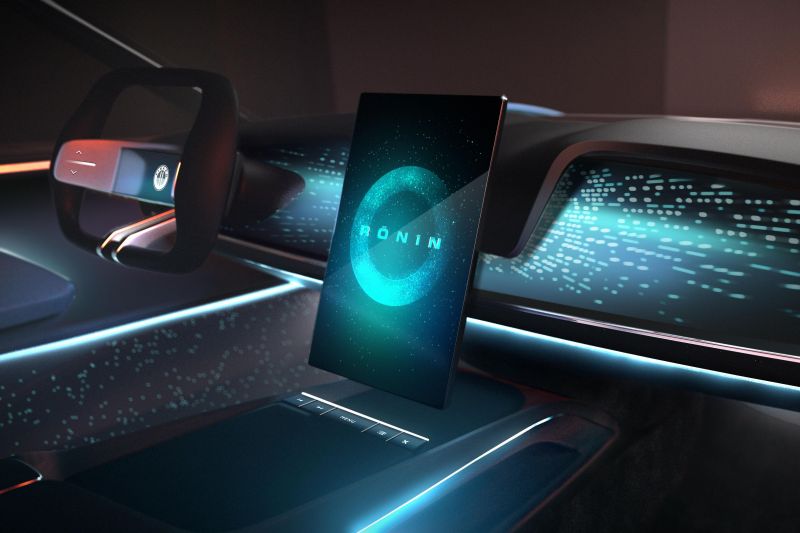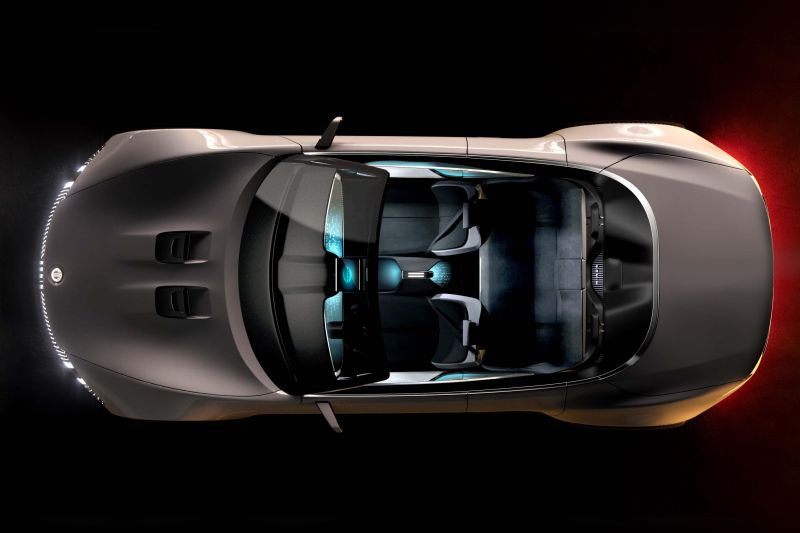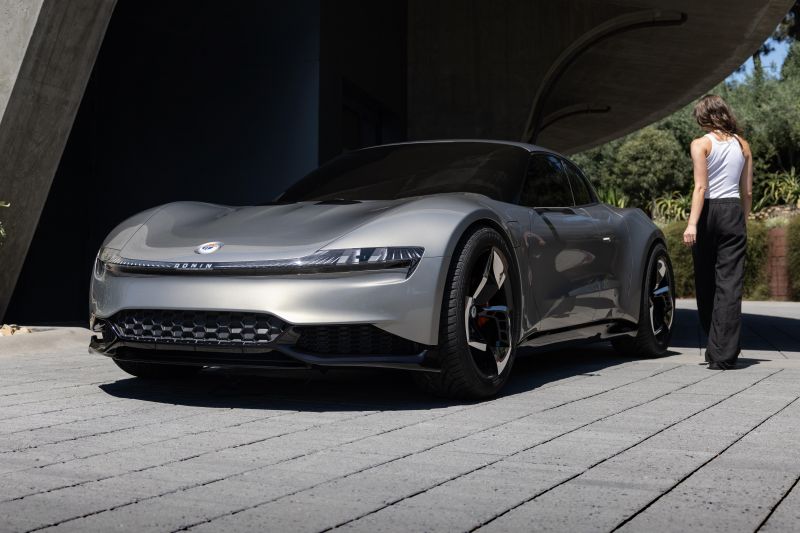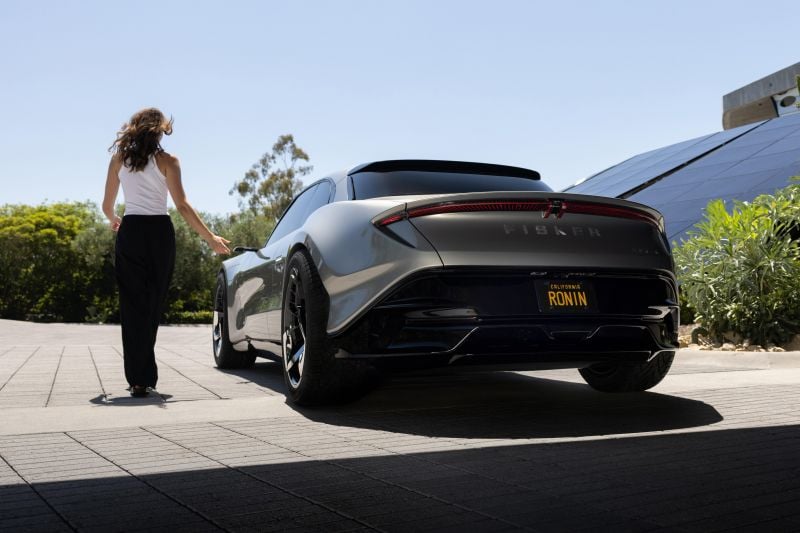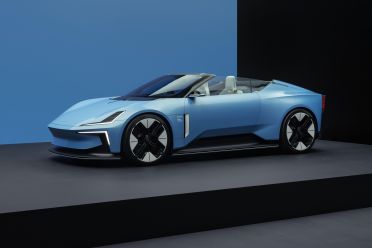American electric vehicle (EV) startup Fisker has revealed new details about its upcoming Ronin Super GT convertible, which it hopes will become the world’s most sustainable supercar.
After previewing the model last week at its Product Vision Day, where it also teased its Pear hatchback and Alaska ute, Fisker has released further provisional details on the technical specifications and availability of the model.
The additional images released by Fisker give a clearer look at the slinky convertible, which almost looks like a sporty sedan with four doors, bulging fenders, and 23-inch carbon fibre wheels.
Butterfly doors open up to the front of the cabin, while rear-hinged rear doors give easy access to the back seats.
The doors can all be opened via smartphone, or by swiping the single flush door handle present on each rear door.
The foldable top is entirely carbon fibre, and automatically retracts into the boot after smartphone activation.
Fisker has acknowledged the popularity of SUVs amongst both manufacturers and customers in the luxury EV space, saying that the Ronin convertible will still comfortably accommodate five people and make use of the battery placement to ensure ample cargo space in both front and back.
While Fisker notes that performance figures are provisional, it predicts the Ronin will do the 0-100km/h dash in about two seconds and reach a top speed of 275km/h thanks to its tri-motor all-wheel drive system.
While Fisker hasn’t specified battery capacity, the model is rumoured to produce 1000 horsepower.
Fisker is still keeping powertrain details under wraps, only confirming that the model will be built around an aluminium space frame with integrated battery cells to achieve its targeted range of 956km.
Rendered images of the interior, which Fisker says will use innovative recycled materials, reveal a steering yoke, a digital instrument cluster in front of the driver, a vertical 17.1-inch central infotainment screen, and extensive dashboard illumination.
Unlike many EV manufacturers focusing on advanced driver assist systems (ADAS), Fisker has noted that while autonomous driving technologies will be available as needed, they won’t be the focus of the driver experience in the Ronin.
Reservations for the 999 available units of the Ronin opened on August 3, with early customers asked to pay a US$2000 deposit (AU$3100).
Pricing will begin at US$385,000 (AU$592,000). For context, an Aston Martin DBS Volante costs $625,600 before on-roads in Australia.
Fisker expects the first customer deliveries will start in the second half of 2025.
“The Fisker Ronin is for people who love to drive, but who are also thrilled by automotive art and design and demand that their high-performance vehicles embrace a sustainable future,” says CEO Henrik Fisker.
According to Mr Fisker, the brand’s goal was “to create a classic grand touring car, updated for the 21st century and engineered for customers who want to drive from Los Angeles to Napa Valley on a single charge or take on the autobahn at steady high speeds without concern for battery capacity.”
Fisker delivered its first EV in May this year when it handed over an Ocean One launch edition SUV at the Fisker Centre+ facility in Copenhagen, Denmark.
The Ronin may beat the repeatedly delayed Tesla Roadster to production. While Tesla said earlier this year its second-generation electric drop-top is due in 2024, it had originally been announced for a 2020 launch so another delay wouldn’t come as much of a surprise.
Tesla claims the Roadster will be able to achieve a 0-100km/h sprint in 1.9 seconds, hit 160km/h in 4.2 seconds, and do the quarter mile in 8.9 seconds.
It will use a 200kWh battery pack and a claimed range of around 1000km.
Fisker’s first electric convertible will have another conceptually similar rival in the Polestar 6, though like the Tesla this hardtop convertible has only two doors.
Under the skin, the 6 will be built on Polestar’s upcoming bonded aluminium architecture. It’ll feature the 800V architecture being developed for the Polestar 5 grand tourer, and is expected to pack 650kW of power and 900Nm of torque.
Polestar is targeting a 0-100km/h sprint time of 3.2 seconds, and flat out you’ll be doing 250km/h.
Maserati is also entering the fledgling electric drop-top market with its upcoming GranCabrio.



